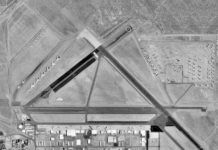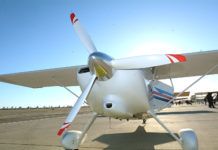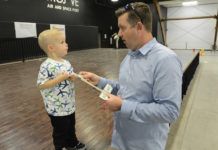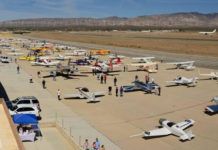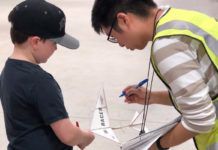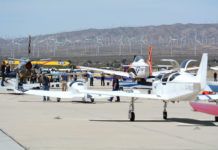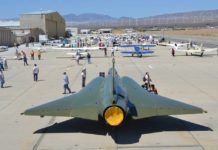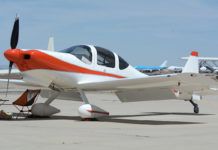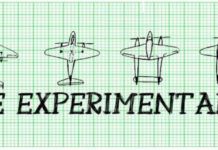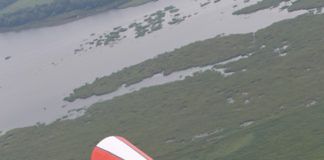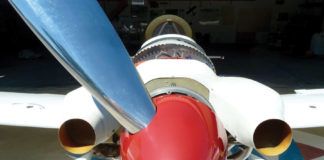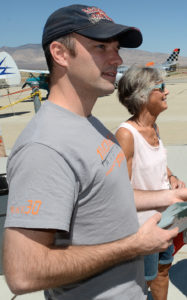
Aviation speed dating on the Mojave ramp
While there’s much more to it, the core attraction of the Mojave Experimental Fly-In is the four-hour meet-and-greet on the expansive Mojave Air & Space Port ramp. The density of interesting airplanes, creative people and new ideas is unsurpassed, so our advice is to arrive as early as possible and be prepared to talk airplanes with plenty of friendly experimenters.
“Early as possible” wasn’t all that early for us this year thanks to goopy weather at our departure airport, but setting the Nikon on rock-and-roll and jogging through the participating aircraft still netted plenty to eyeball below.
And before moving on to the photos, we must say if you have the time the wonderfully enthusiastic Elliott Seguin and cohorts at Mojave always have a little fun leading up to the main event on Saturday. There are the record setting activities in the week prior, but these are not exactly spectator events as weather and mechanical considerations make the precise scheduling of any flights last minute affairs and things are cricket-quiet between flights. That said, if you really want to experience the hands-on aspect of record setting you’re welcome to come by.
Much more participatory this year were Friday’s Bug Smasher Poker Run (an excuse to ogle nearby air racer hangers in California’s central valley), flour bombing at Mojave on the return from the fly-out, plus movies, models, pizza and a slumber party at Mojave on Friday night. The last was family friendly and a place to let both your children and inner kid loose with simple model airplanes. If you’re tired of the doom and gloom drumbeat in general aviation these days the enthusiasm at the MEFI is sure to recharge your batteries!
You can keep track of the MEFI via www.mojaveflyin.com, and if you’re anywhere nearby, plan on attending next April.
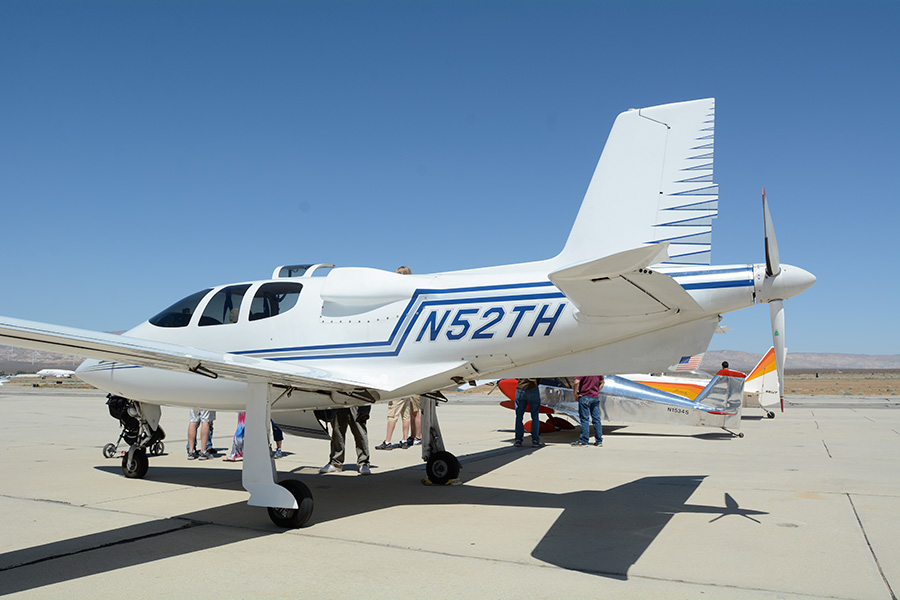
With only five flying you don’t run into a Cirrus VK30 every day. Owner Tom Hastings took eight and a half years to build his using a 300-hp IO-550G Continental and MT prop. Undoubtedly the world’s highest time VK30 with nearly 1,000 hours, Hasting has obviously been flying his. From home base at Van Nuys, California, the Cirrus has attended OSH “many times,” sometimes non-stop. Hasting rates the VK30 a stable IFR platform, says it will hit 190 kts, or more typically cruises at 175 kts at 16 gph at Hasting’s usual 12,500 ft cruise altitude. Maximum range is 2,100 miles.
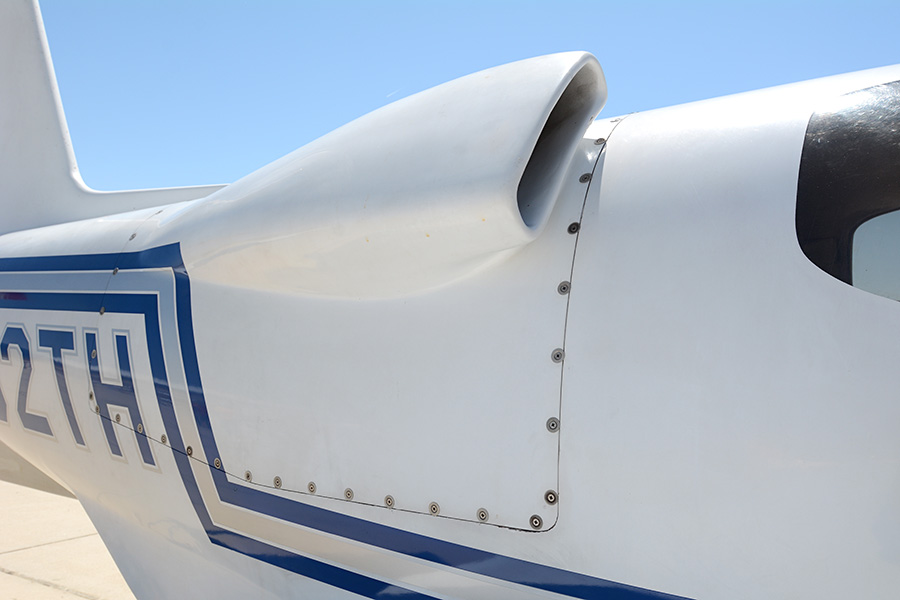
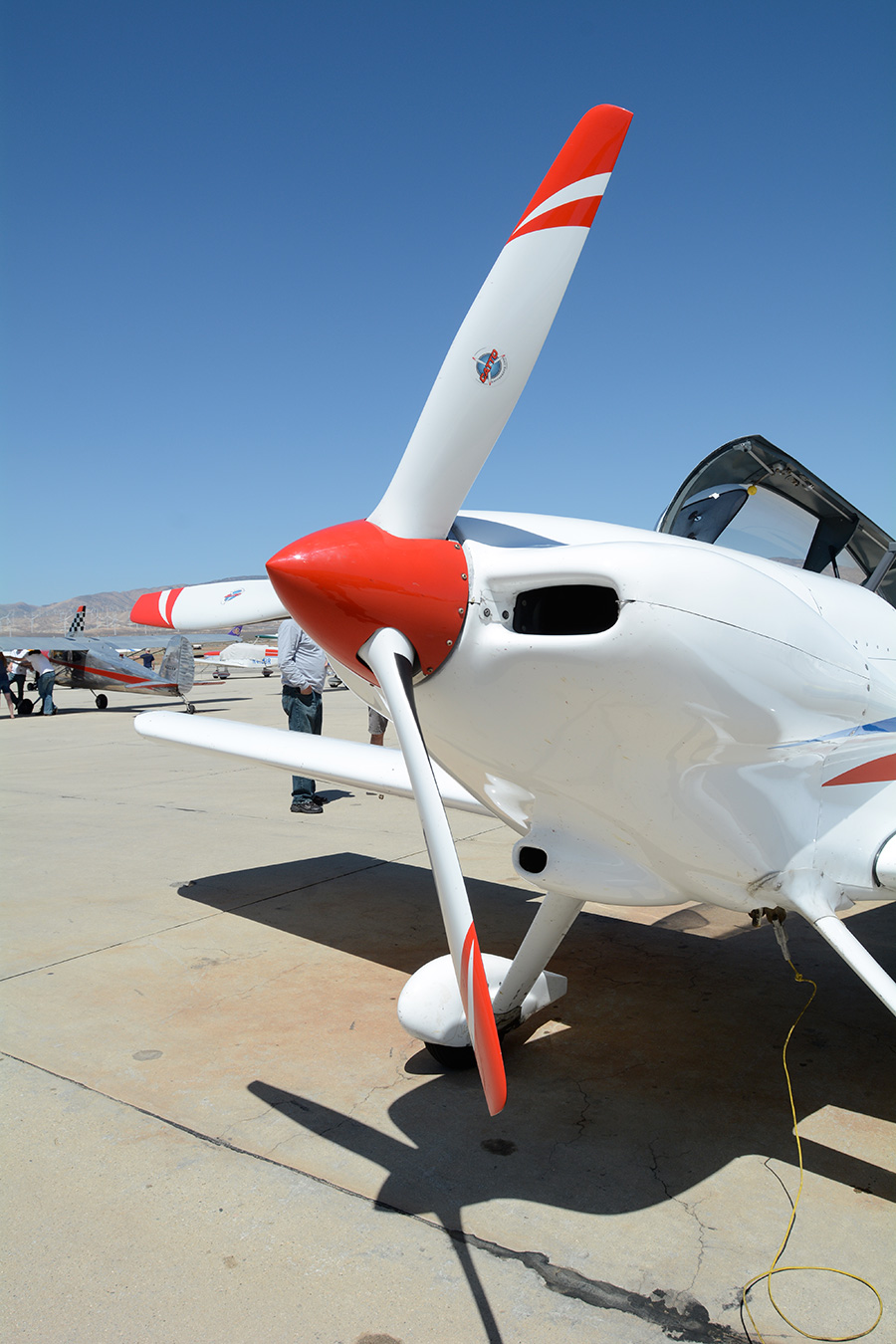
This Catto 3-blade caught our eye; turns out it was attached to Mark Albery’s RV-4. You probably know Albery’s other RV—an -8—in which he flew from California to England. That flight was documented in the December 2013 issue of KITPLANES; and what a great opportunity it was to meet the trans-Atlantic RV-flyer. Albery says the Catto makes a great cruise prop; he normally runs it at 2500 rpm at 20 in. Hg. at 10,000 ft.
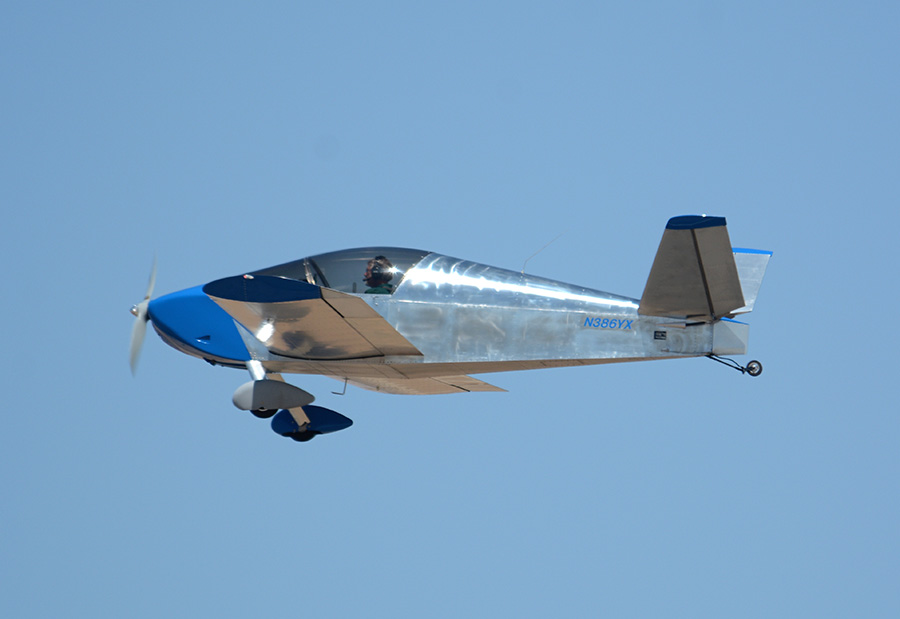
One thing we love about the Experimental Fly-In is the emphasis is on engineering and not show. Under-construction projects are proudly trucked in, and no one could care less that Harvey Miller’s Waiex has one blue wheel pant and one in primer gray–participation is what matters. We didn’t get a chance to chat with Miller, but the paperwork says there’s a Jabiru 3300 under the cowling.
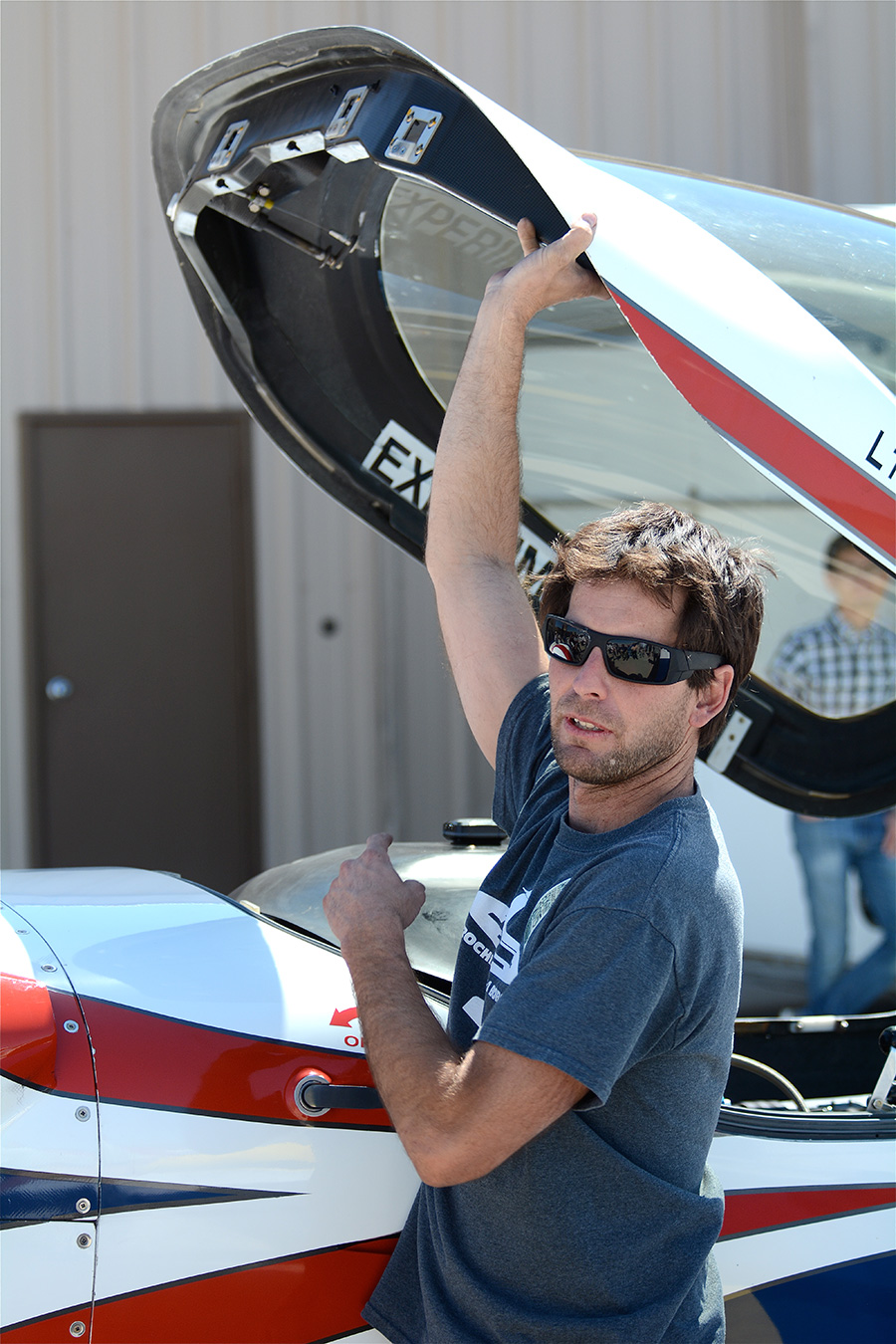
The MEFI is a judged show for those wanting to enter. This provides a fabulous opportunity to follow the judges and eavesdrop while the principles explain the highlights of their craft to the judges. Here Andy Chiavetta, winner of Best Overall Experimenter as part of Lynn Farnsworth’s Race 44 team, explains why he selected a rear-hinged canopy and the resulting latching mechanism on Farnsworth’s Lancair racer. Great stuff.
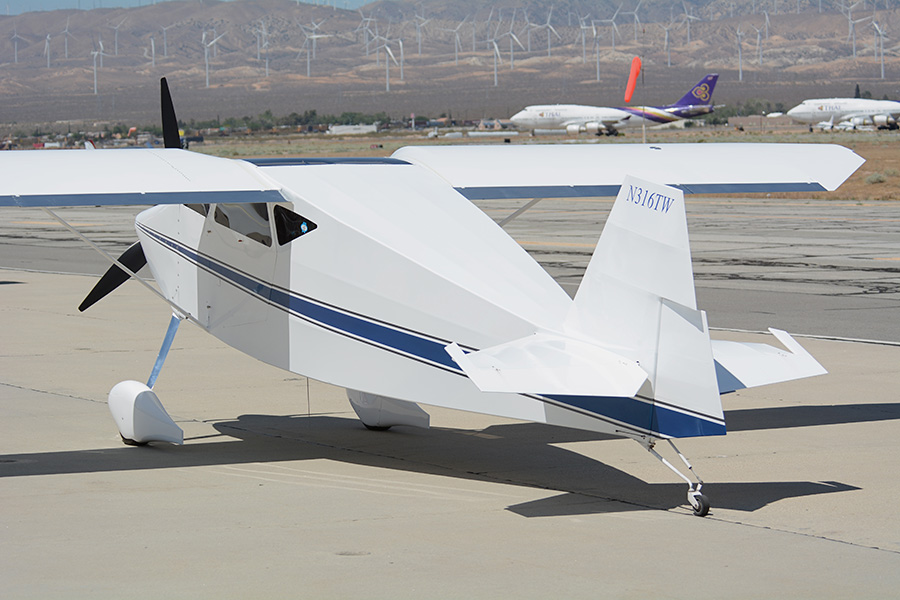
If propellers were on your mind, Jim Rust, owner of Whirlwind Propeller made the trip to Mojave. His blazingly white Wittman Tailwind is a former KITPLANES cover model and a fine example of the breed. You score absolutely zero points for deducing it wears a Whirlwind 3-blade ground adjustable prop. Rust and Robbie Grove are working on a higher efficiency Lancair IV project that had them in contention for Experimenter of the Year at Mojave.
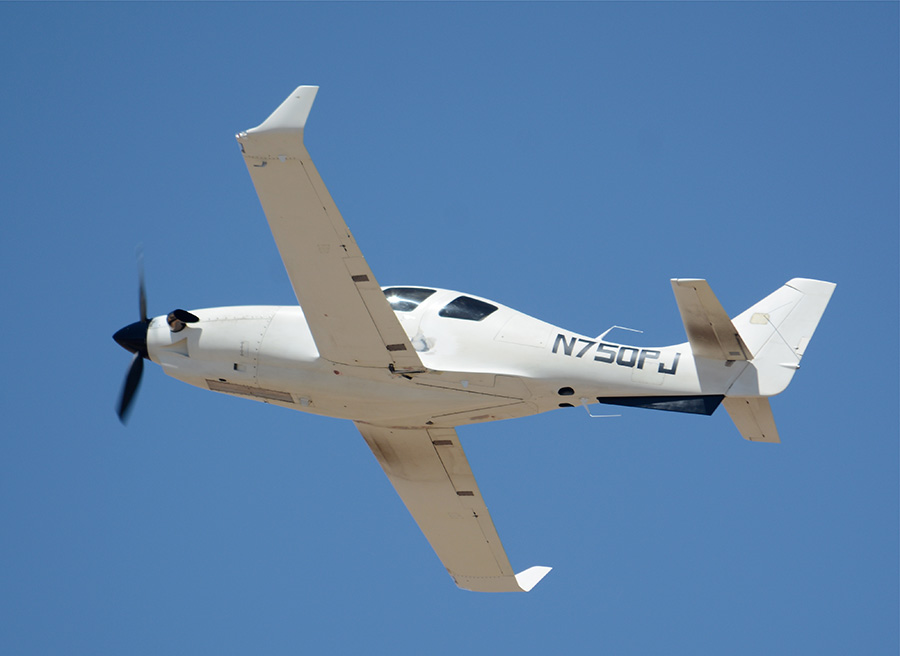
Lancairs were especially well-represented this year at Mojave, including this Prop Jet registered to Stone Robin out of Henderson Nevada. Judging from the exhaust stains under the right wing and left horizontal stabilizer there must be something to the conventional wisdom that says a propeller twists the air around the fuselage.
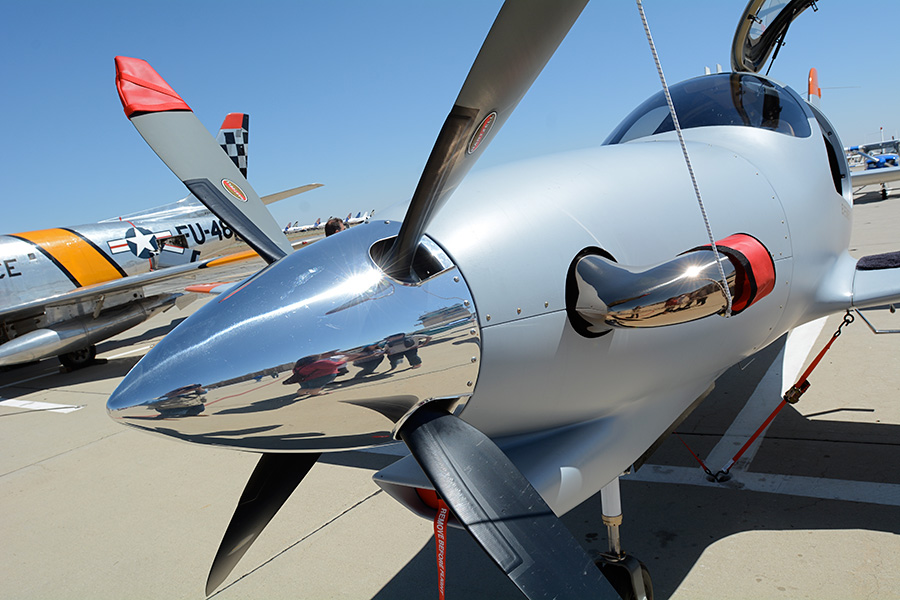
Another IVP Prop Jet was the factory demonstrator aircraft. Lancair sent several engineers to the MEFI both to preach the gospel and gauge experimenter activity. In some ways that’s easier at an intimate event such as MEFI than the big Wisconsin and Florida blow-outs.
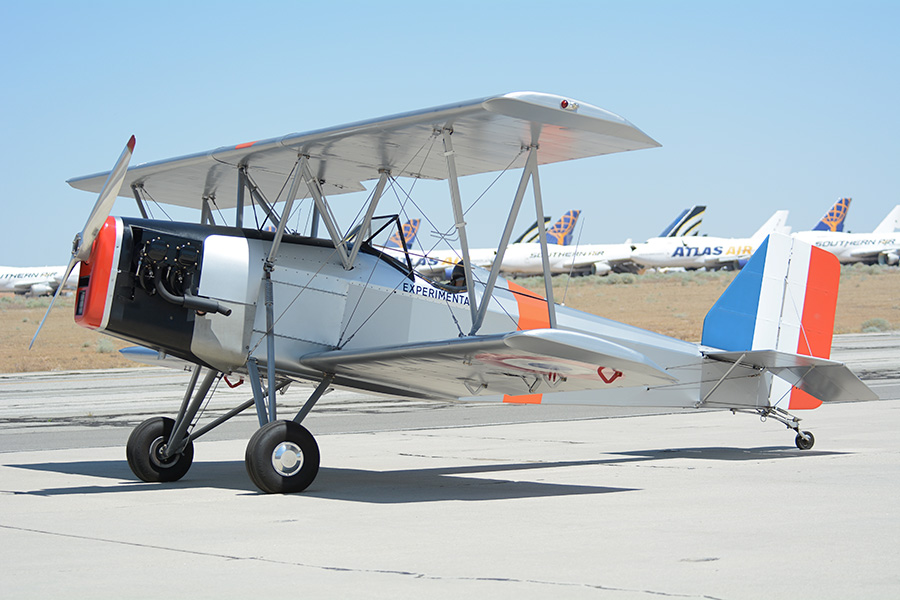
Every plane spotter on the Mojave ramp circled this biplane asking each other the obvious question, “What is it?” We too, until owner Jerry Mason of Van Nuys, California walked up. It’s one of two, designed by his father in the early ‘60’s. A fun flyer from the scratch-design, scratch-built heyday of homebuilding, the single-seater is Lycoming O-235-powered and boasts light controls and a responsive roll rate. There never were any plans, just chalk on the hangar floor. Built with a starter motor (uptown in those days), the only modern additions are a radio and transponder.
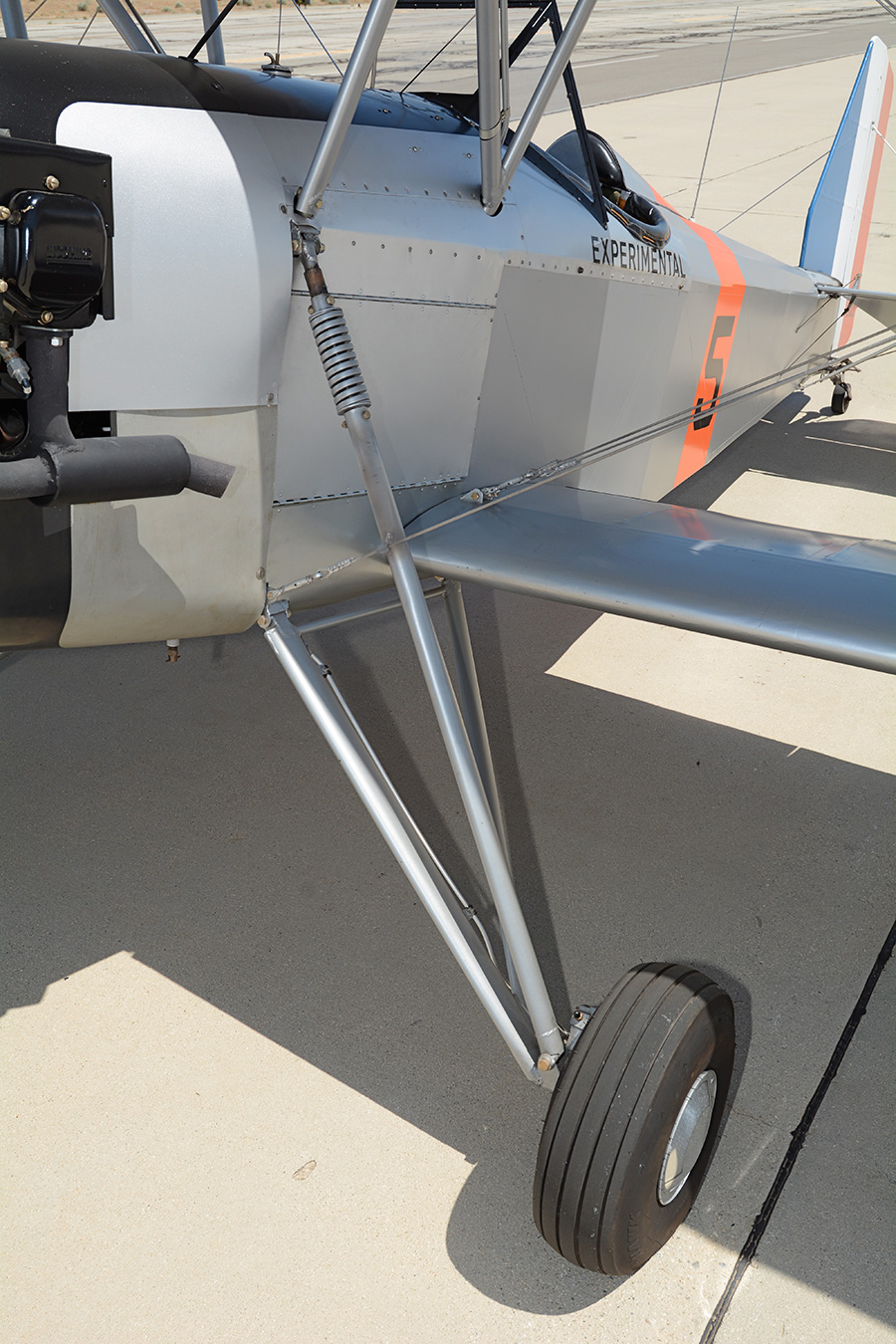
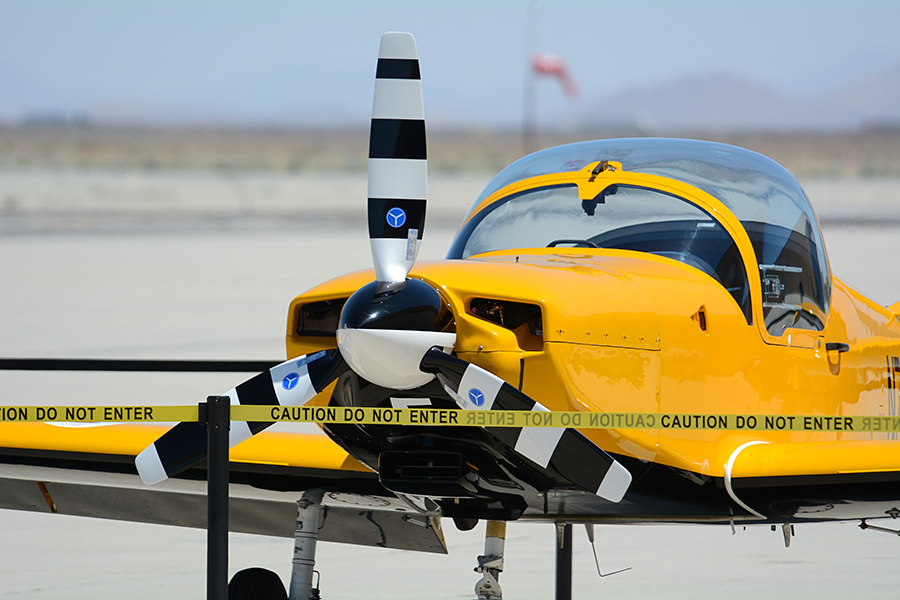
We didn’t get to talk to anybody about this unusually decorated Hoffmann propeller. Too bad, as the more we look at it, the more there has to be a story behind the asymmetrical paint scheme.
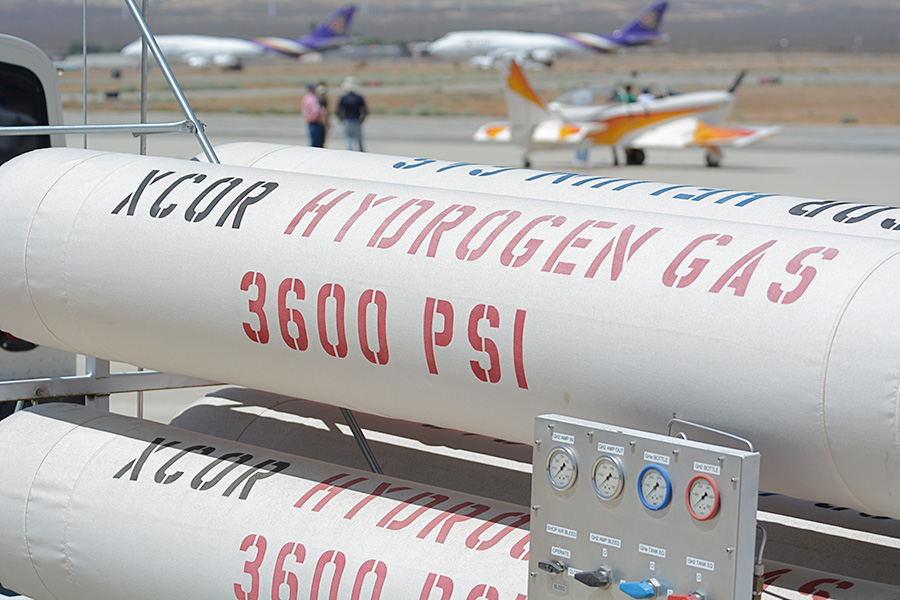
There’s always a reminder of just how experimental things get at Mojave as this XCOR rocket refueling rig attests. In the background is John Tumilowicz’s Jurca Scirroco. Originally built in Long Island, New York, the tandem two-seater graced the cover of the third issue of KITPLANES magazine. It now has 2,200 hours, three trans-continental flights and multiple trips to Air Venture and Sun-and-Fun to its credit.
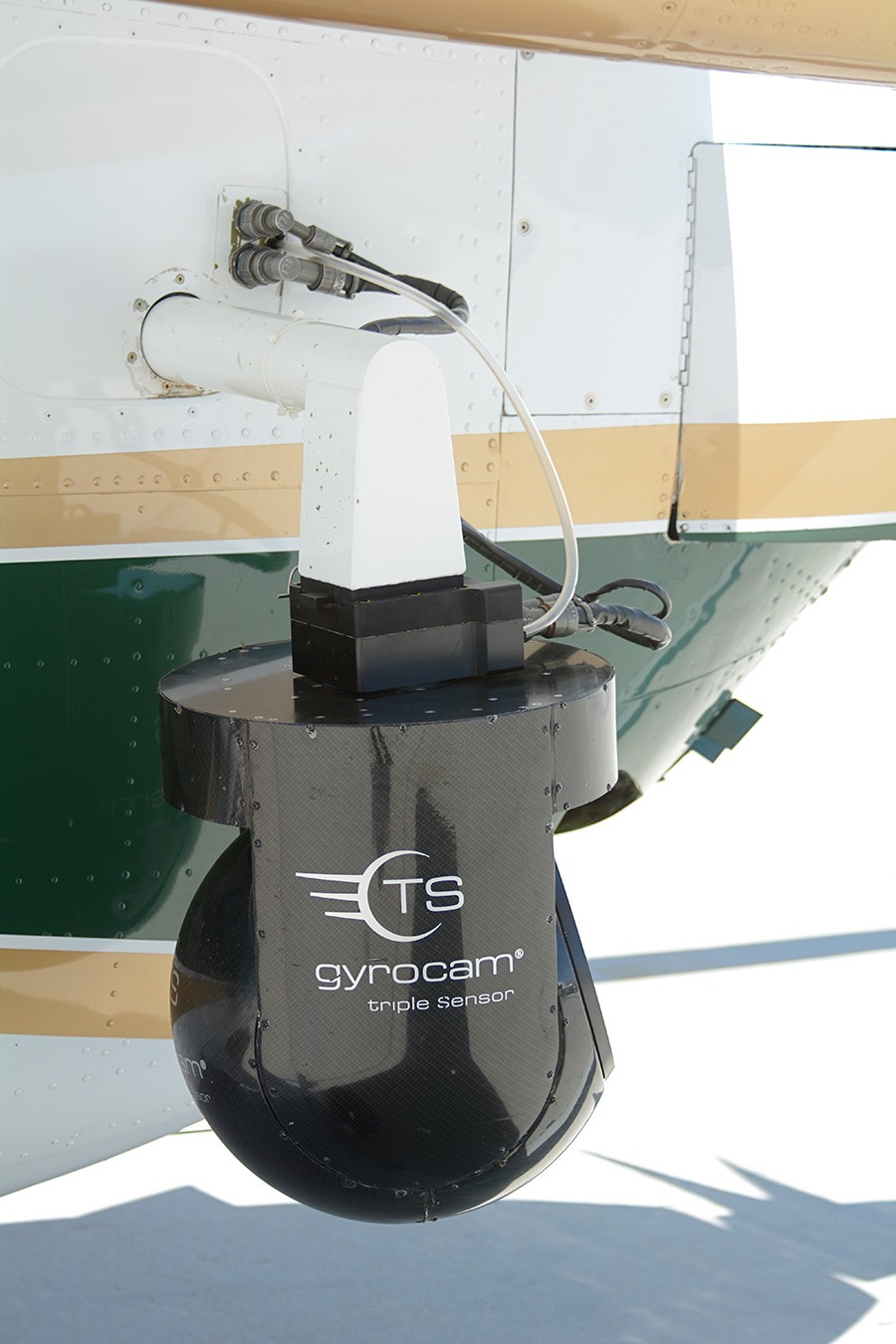
Looking a little more advanced than the GoPro on your quad-copter, this Triple Sensor Gyrocam was hanging off the port side of a Cessna mixmaster. We didn’t bump into anyone with the airplane, but thumbing through the Internet says this Lockheed-Martin unit is 4-axis gyro-stabilized and gives thermal, hi-res color and next-gen infrared imaging. A sticker on the side claimed the rangefinder’s laser was disabled, so adolescents playing with laser pointers in their backyards need not fear retaliatory counterattacks from this one.
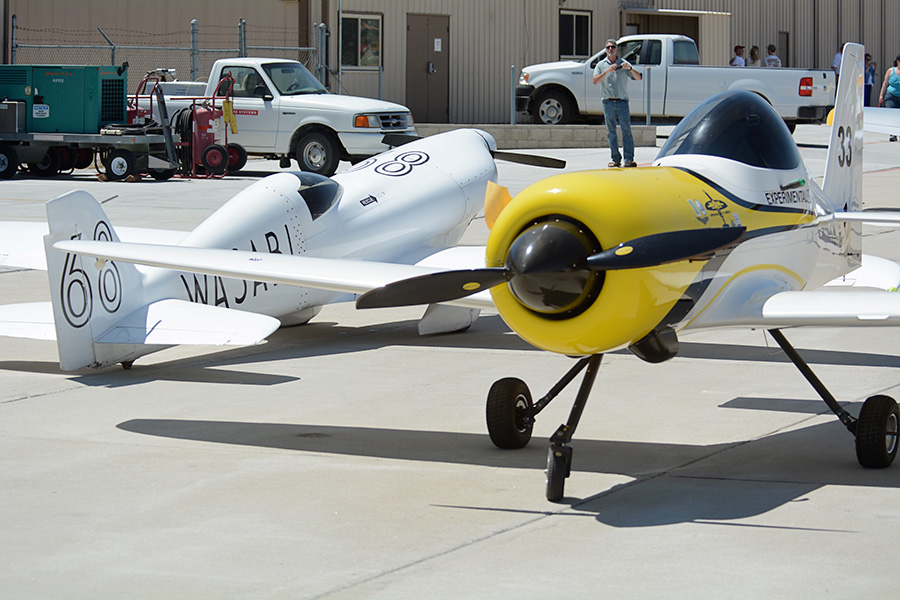
Event organizer Elliott Seguin’s Wasabi racer was a given on the Mojave ramp. It made an especially popular attraction after all the recent press Seguin and Wasabi gained after his Reno racing and non-stop Mojave-to-Oshkosh adventures. Andy Chiavetta was sure as sunrise at the MEFI too, and naturally he used his so far one-off LT-1 with its distinctive yellow cowling to get there from his Santa Paula base.
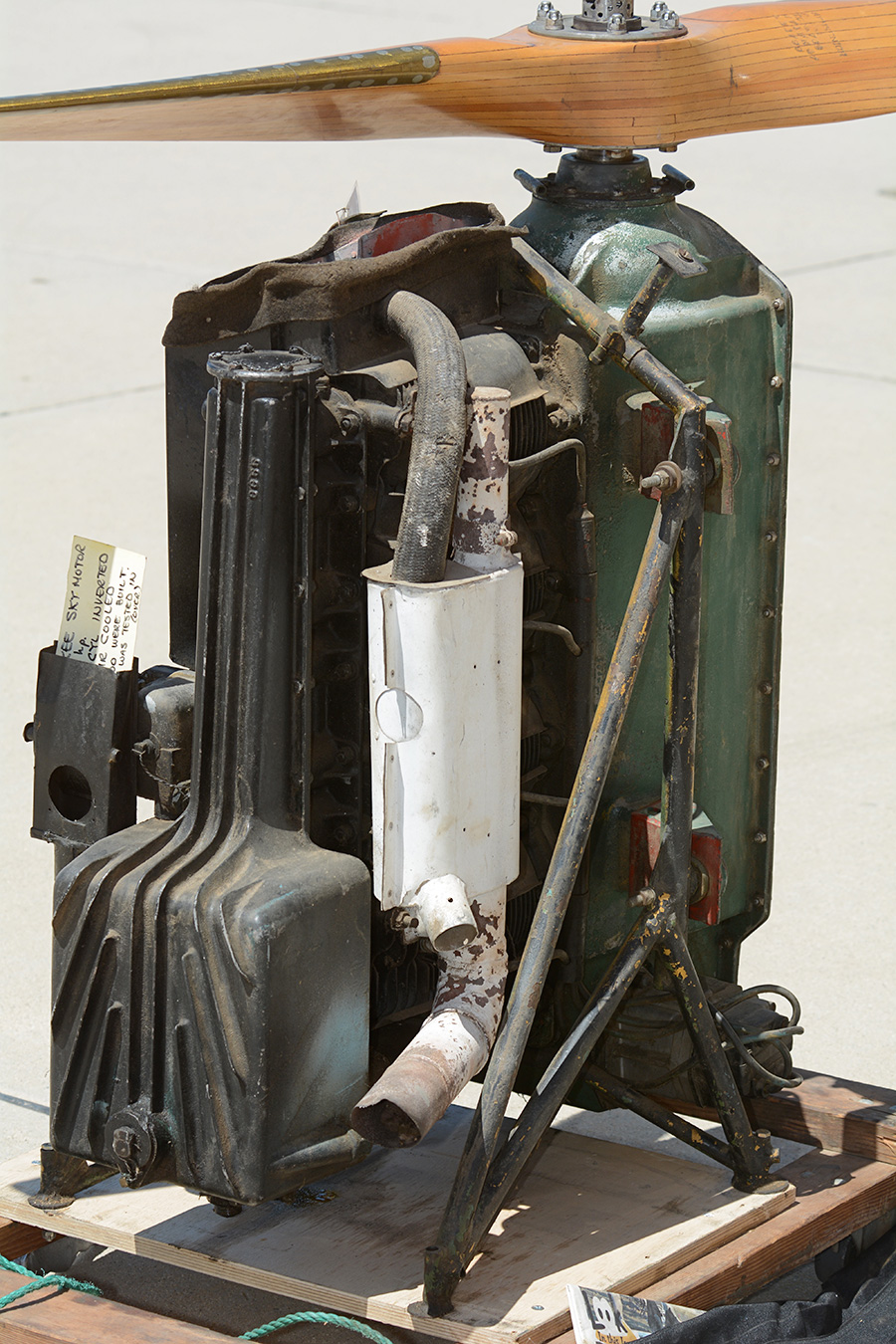
Yeah, we didn’t know what it was either until we read the placard… one of just two Milwaukee Skymotors built, this experimental inline 4-banger dates from 1939 and made a fun curio displayed under the wing of Ken Hetge’s Piper J4. According to the sign this 63 hp engine flew on a Piper J3 and prototype J4, plus a homebuilt Skyhawk biplane and finally on a Knight Twister.
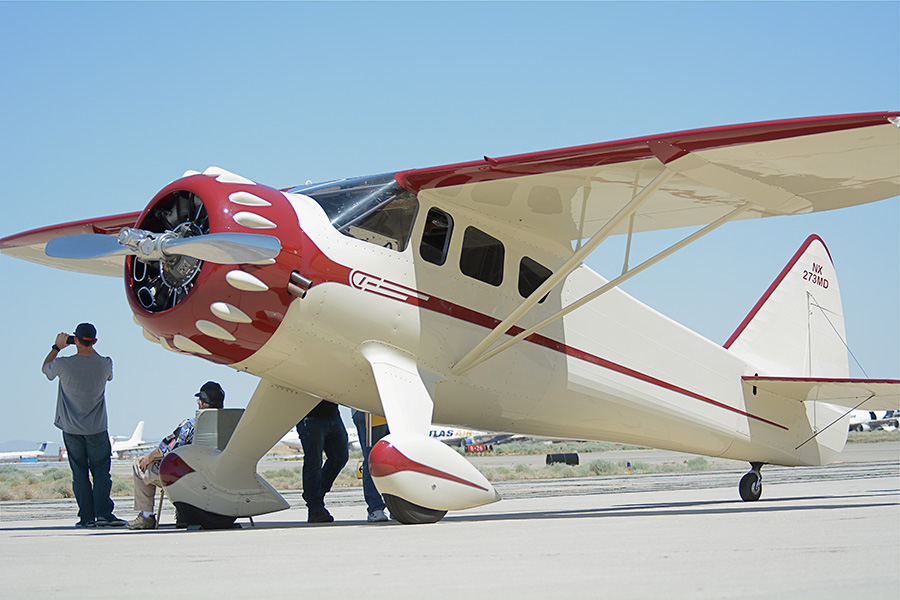
Magnificent is the word for Bruce Dickenson’s development of the Howard line. One of the grandest experimentals ever, and certainly one of the few in memory with 600 hp worth of Pratt & Whitney power, this is the first we’d seen Mr. Dickenson in its final paint. Sprayed by Ruben at Ray’s Aviation in Santa Paula, the cream and red paint took 8 months to apply but the results are worth it. Dickenson reports 192 to 194 mph IAS in cruise now that Mr. Dickenson is painted.
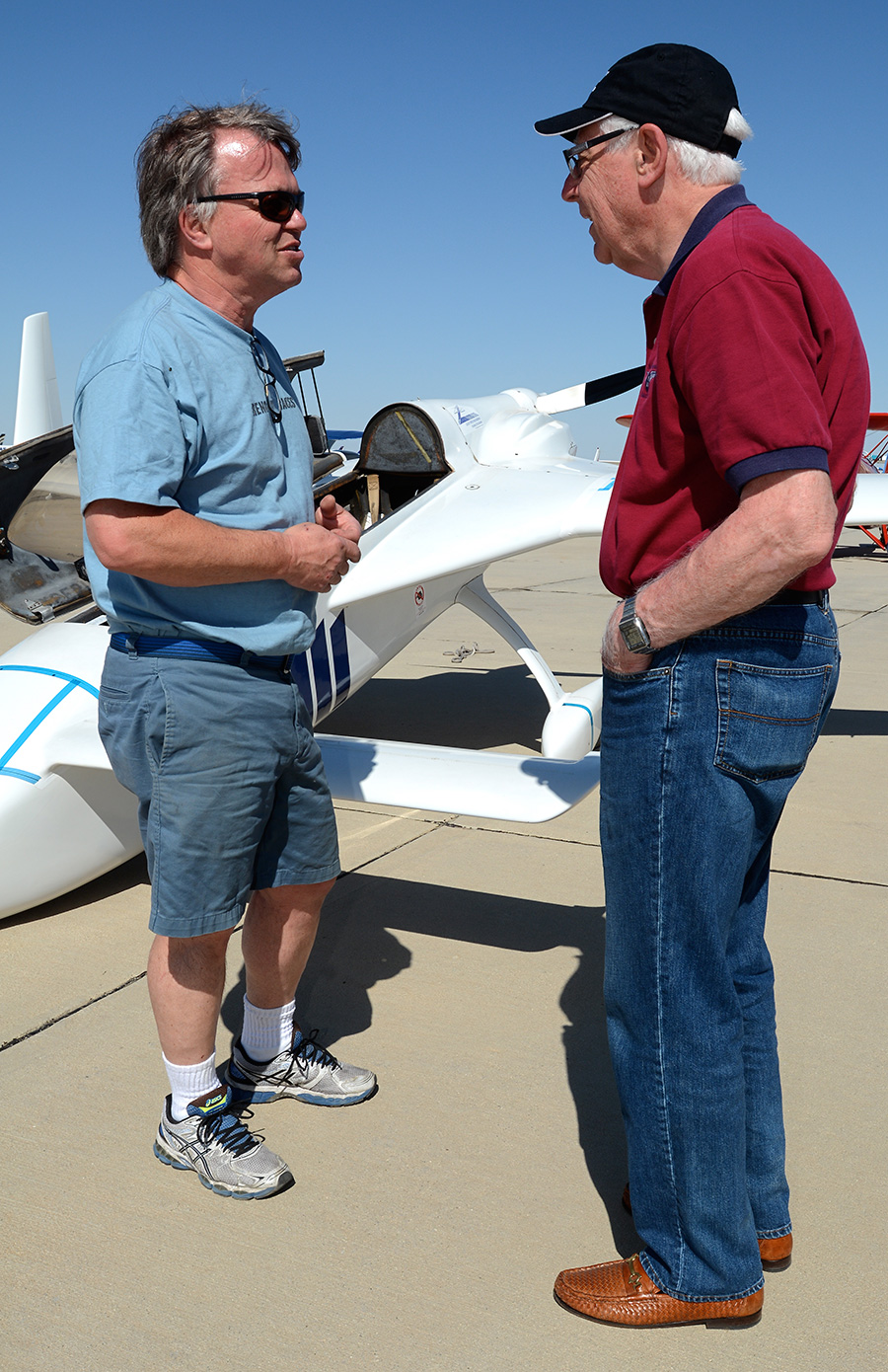
While the hardware is a draw, what the MEFI is all about is meeting like-minded experimenters. Just one example is Klaus Savier (left), owner of Lightspeed Engineering and 2-time record setter at Mojave this year, chats with Brian Utley, the official NAA observer during speed week. The density of experimental aviation brain-power at Mojave is unexcelled.

